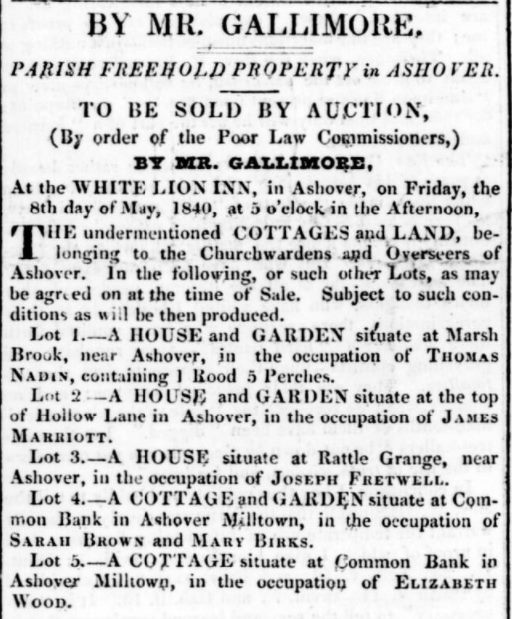
Spotting this newspaper clipping from the Derbyshire Courier – Saturday 02 May 1840 on the Ashover History and Genealogy Facebook page prompted the obvious question: why were the Poor Law Commissioners ordering such sales to be made? A quick email to our Editor, Philip Riden, generated this explanation:-
“It’s probably to raise cash towards their share of building Chesterfield union workhouse. Ashover was put into Chesterfield union after 1834 and each township in the union had to find a share of the cost of the workhouse. If a township owned some property for the benefit of the poor, typically either a parish workhouse or cottages in which they used to house the poor, or from which they took rent to pay to the poor, which would not be needed for any of those purposes after the union workhouse was opened, the township was expected to sell the property. The proceeds would be credited to the township’s capital account with the union, thus reducing the amount they had to raise in rates to pay each year on capital account towards the cost of the workhouse.”
“Ashover had a union workhouse built under the 1785 Act (which provided for voluntary unions of parishes). I assume that was transferred to Chesterfield union after 1834 and sold by the Chesterfield guardians. This sale does not look to me like the old Gilbert Act workhouse at Ashover, and I would guess the cottages had ended up in the hands of the wardens and overseer and the rent was being used to reduce the poor rate for the parish. So they would have to be sold under the 1834 Act.”
Somewhat unfortunate for the tenants who would presumably have found themselves homeless after the sale and looking for somewhere else to live.
